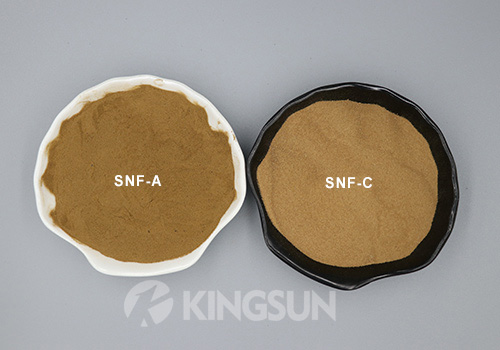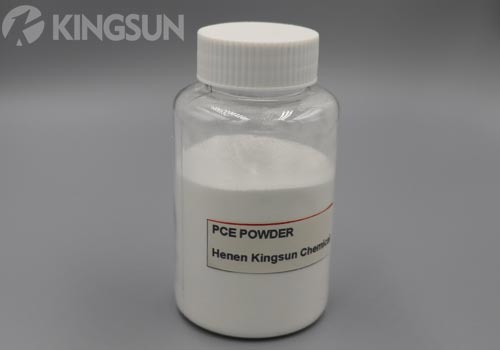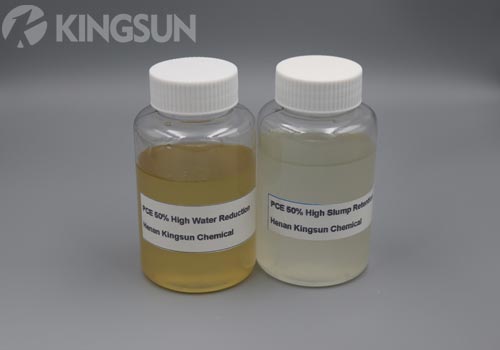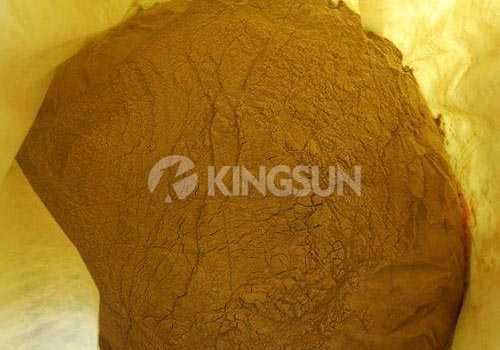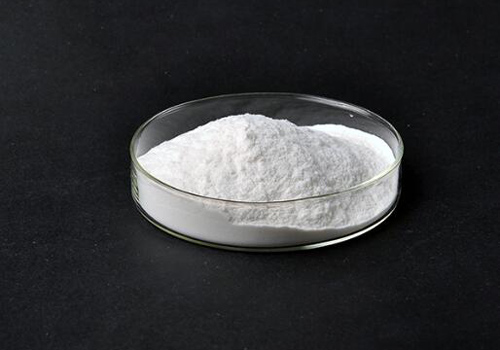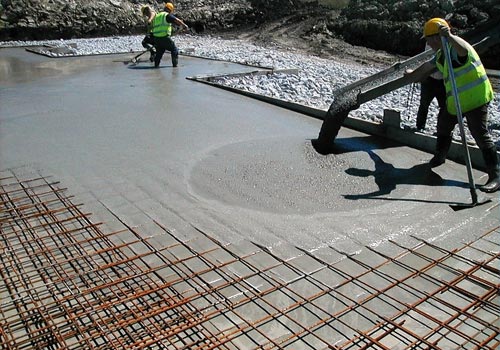The concrete plasticizer, also known as superplasticizer, refers to an chemical additive that can highly improve the workability, strength, durability, and other properties of concrete. They are essential for the production of high-quality concrete structures in the construction industry. As an important building chemicals material, concrete plasticizers can significantly improve the properties of fresh and hardened concrete. Duo to the development of concrete is more and more in-depth, the use of plasticizer in concrete is also becoming more and more important. That’s because it is an integral part of concrete and greatly affects its properties. Most importantly, adding plasticizer to concrete can help us to reduce moisture, save cement, and improve plasticizing properties.
Difference Between Plasticizers and Superplasticizers
Both plasticizers and superplasticizers can be added to concrete mixtures to reduce the water/cement ratio, thereby reducing water requirements in concrete production. But there are some differences between them.
- Plasticizers are also called water reducers because they produce concrete with the same workability at a lower water/cement ratio. Therefore, plasticizers help to make concrete mixtures with high durability and the same moisture content.
- Superplasticizers are also called high range water reducers, it can improve the strength and durability of concrete. Besides, they increase slump for easier placement, resulting in denser and more durable concrete.
- The main difference between plasticizers and superplasticizers is that plasticizers can reduce the need for water by 5-15%, while superplasticizers can reduce the need for water by 30%.
- In general, the amount of plasticizer added is generally 0.1-0.5% by weight of cement. The amount of water reducing agent added is 0.5-3% by weight of cement.
Various Types of Plasticizers for Concrete
Plasticizers are chemical compounds that are added to concrete to improve its workability and reduce water content while maintaining its strength and durability. There are several types of plasticizers used in concrete, each with its unique properties and applications. Here are some of the most common types of plasticizers for concrete in Kingsun:
- Lignosulfonate plasticizers are made from sulfite pulp waste, which is a byproduct of the paper-making process. They are commonly used in concrete mixtures that require a longer setting time.
- Naphthalene sulfonate plasticizers are made from naphthalene, a type of aromatic hydrocarbon. They are commonly used in precast and ready-mix concrete to improve workability and reduce water content.
- Polycarboxylate plasticizers are synthetic materials that have a high water-reducing capacity. They are commonly used in high-strength concrete mixtures that require low water-to-cement ratios.
- Melamine formaldehyde plasticizers are synthetic materials that have a high water-reducing capacity and provide excellent early strength to concrete. They are commonly used in precast concrete and high-strength concrete mixtures.
- Sodium Lignosulphonate
- SNF Superplasticizer
- PCE Superplasticizer
- SMF Superplasticizer
Sodium lignosulphonate is a concrete water reducer plasticizer. This lignosulphonate can greatly reduce the hydration of concrete, reduce porosity, increase the compactness of concrete, and improve the strength and impermeability of concrete.
After adding the sodium lignin sulfonate into the concrete, the hydrophobic group of the plasticizer is adsorbed on the surface of the cement particles, and the hydrophilic group is directed to the aqueous solution to form a single or multi-molecular adsorption film so that the cement particles have the same surface, charges are mutually exclusive and dispersed, and the excess water is released from the particles to achieve the purpose of water reduction. At the same time, since the surface tension of the water and the interfacial tension between the cement particles lower, the water consumption is reduced correspondingly while maintaining the same fluidity, thereby also reducing the water.
| Items | Sodium lignosulfonate |
| Appearance | Yellow Brown Powder |
| Dry Matter % | 92 min |
| Lignosulphonate % | 60 min |
| Moisture % | 7 max |
| Water-insoluble matter % | 0.5 max |
| Sulfate (as Na2SO4) % | 4 max |
| PH Value | 7.5-10.5 |
| Content of Ca and Mg % | 0.4 max |
| Total reducing matter % | 4 max |
| Content of Fe % | 0.1 max |
| Packing | Net 25kg PP bags; 550kg jumbo bags; |
SNF superplasticizer, also called naphthalene based superplasticizer, is the most widely used concrete superplasticizer in construction industry.
It accounts for about 70% of the amount of water reducing agent. It has the characteristics of a high water reduction rate (15% to 25%), no air entrainment, and little effect on setting time, and the adaptability to cement is relatively good. Most importantly, it can be used in combination with various other admixtures and is relatively inexpensive.
The naphthalene based superplasticizer is often used to formulate high fluidity, high strength and high performance concrete. It is especially suitable for use in the following concrete projects: fluidized concrete, plasticized concrete, steam-cured concrete, impermeable concrete, waterproof concrete, natural curing prefabricated concrete, reinforced and prestressed reinforced concrete, high-strength ultra-high-strength concrete.
It should be noted that if the naphthalene superplasticizer is simply added, the slump loss of the concrete will be faster. In addition, the adaptability of naphthalene based superplasticizers to certain cements needs to be improved.
| Type | SNF-A | SNF-B | SNF-C |
| Solid Content (%) ≥ | 92% | ||
| PH Value | 7-9 | ||
| Na2SO4 Content (%)≤ | 5 | 10 | 18 |
| Chlorine Content (%)≤ | 0.3 | 0.4 | 0.5 |
| Net Starch Fluidity(mm)≥ | 250 | 240 | 230 |
| Water Reducing Rate(%) | 26 | 25 | 23 |
| Packing | 25kg pp bag; 650kg Jumbo bag. A customized package is available. | ||
Polycarboxylate ether, also called PCE superplasticizer, is a new type of high-performance superplasticizer. It has characteristics like low dosage, high water reduction rate, remarkable enhancement effect, low slump loss over time, and little effect on setting time. The use of a polycarboxylate ether superplasticizer has the following advantages.
- For PCE superplasticizer, the dosage is low and the water reduction rate is high. In general, the dosage is usually 0.05-0.5% of the cement material, and the water reduction rate is up to 30%.
- There is a large degree of freedom in changing the molecular structure of pce. Many carboxylic acid polymers can be used as high-performance superplasticizers, and the variety of raw materials is diverse.
- PCE has good compatibility with cement, additives, and other admixtures. The concrete does not segregate or secrete water. Besides, it has a good slump retention performance.
- The performance of PCE superplasticizer can be designed according to different requirements. It can effectively control the early hydration of cement in concrete. It is suitable for the preparation of large volume concrete and it can prepare high strength, ultra high strength special concrete.
- Polycarboxylate ether water reducing agent provides technical support for the large-scale utilization of industrial wastes such as large-volume fly ash, slag and steel slag in concrete engineering. And the synthesis of PCE does not use formaldehyde, which is conducive to the sustainable development of building materials.
| Items | Standard | ||||
| PCE (High Water Reduction) | PCE (High Slump Retention) | PCE-Powder | |||
| Appearance | Light Yellow Liquid | Clear Transparent Liquid | White Powder | ||
| Solid Content, % | 50±1.0 | 50±1.0 | 98±1.0 | ||
| Density (23℃) (kg/m3) | 1.13±0.02 | 1.05-1.10 | 600±50 | ||
| PH | 6.5-8.5 | 6.5-8.5 | 9.0±1.0 | ||
| Chloride Content,% ≤ | 0.1 | 0.1 | 0.1 | ||
| Na2SO4 (by solid content), % ≤ | 4.0 | 4.0 | 4.0 | ||
| Solubility | Completely Soluble | ||||
| Water reducing ratio, % ≥ | 25 | ||||
| Packing | For PCE liquid, the packing of PCE liquid is 230kg PE drum, 1100kg IBC tank or flexitank.For PCE Powder, 25 kg PP woven bags. | ||||
SMF melamine formaldehyde superplasticizer is a type of chemical additive used in the construction industry to improve the flow and workability of concrete. It is a water-reducing agent that is added to the concrete mix to increase its fluidity without sacrificing strength or durability.
This superplasticizer is made by reacting melamine, a nitrogen-rich organic compound, with formaldehyde to form a polymer. The resulting polymer is then sulfonated to make it water-soluble and enhance its ability to disperse in concrete.
The use of melamine formaldehyde superplasticizer allows for the production of high-strength, high-performance concrete that is easier to place and finish. It also reduces the amount of water needed in the mix, which can lead to improved durability and reduced shrinkage.
The water-reducing effect of cement plasticizer is one of its most important properties. And the effect of water reduction is mainly caused by adsorption dispersion, lubrication, and wetting. Lubrication is by the plasticizer that produces a layer of solvated water film on the surface of the cement particles and fine bubbles to prevent direct contact of the cement particles. Wetting can make the particles of cement disperse as much as possible, increase the hydration area of cement, and accelerate the hydration speed. Moreover, the wetting action can also improve the workability of the concrete, and reduce the amount of water for mixing while also achieving uniform mixing.
The super plasticizer molecules adsorb on the surface of cement particles, forming an interface film with a certain mechanical strength, preventing the condensation of particles. Due to the dispersion and water-reducing effect of the plasticizer admixture, it can lower the water-cement ratio, and uniformly disperse the cement particles, and then prevent them from agglomerating into a group, enhance the compactness of concrete, thereby increasing the strength of concrete.
During the hydration process of cement, the surface free energy of cement particles is large and agglomeration occurs. At the same time, the hydration product produced by hydration will increase the viscosity of the fresh concrete and cause the slump loss of the concrete. After adding a high range plasticizer admixture, the surface of the cement particles adsorbs highly efficient plasticized molecules, and the electric potential of the cement particles increase, which increases the dispersion of the cement, inhibits the slump loss, and improves the plasticizing performance.
- Increased strength. One advantage of using concrete plasticizers is that they can help increase the strength of the concrete. By reducing the water-cement ratio, plasticizers can lead to a denser and stronger concrete mix. This is especially useful for structures that require high strength, such as bridges and high-rise buildings.
- Improved workability. Another advantages of concrete plasticizers is that they improve the workability of concrete. They reduce the water requirement for a given slump and allow for better mixing and placement of concrete. This means that the concrete can be poured and placed more easily, resulting in a smoother and more consistent finish.
- Improved durability. The plasticizer for concrete can also improve the durability of concrete. By reducing the permeability of concrete, plasticizers can make it more resistant to water and chemical penetration. This means that the concrete is less likely to crack, spall, or corrode over time, resulting in a longer lifespan and reduced maintenance costs.
- Better finish. They can also improve the finish of concrete. They can help produce a smoother surface, reduce the incidence of surface defects such as honeycombing, and enhance the color and texture of the concrete.
- Eco-Friendly. Many concrete plasticizers are now formulated with eco-friendly materials. They can reduce the carbon footprint of construction by reducing the amount of water and cement needed for a given project. This can help reduce greenhouse gas emissions and make construction more sustainable.
- Cost-Effective. Plasticizers in concrete are relatively inexpensive compared to other concrete additives, such as superplasticizers or air-entraining agents. They can also reduce the overall cost of construction by allowing for faster and easier placement of concrete, reducing labor costs and construction time.
- Safety. Concrete plasticizer can also improve safety on the construction site by reducing the amount of physical strain required to work with the concrete. This can help to reduce the risk of accidents and injuries, ensuring that workers can complete their tasks safely and efficiently.
Leading Concrete Plasticizer Manufacturer & Supplier in China
The concrete plasticizer for sale really has a great impact on the performance of concrete. Therefore, choosing the right plasticizer is beneficial for your building business. However, do you know where to buy high quality plasticizers for concrete? Maybe Kingsun is your good choice.
- As one of the most professional manufacturers and suppliers in China, Kingsun company has been committed to the research and production of various concrete additives for more than 15 years.
- Kingsun has a large production workshop and warehouse, advanced production equipment, R&D center, testing center, and professional sales team.
- We not only provide customers with sufficient supply, but also ensure that the goods are delivered to the customer’s destination port within the specified time.
- We always rovide high-quality products, competitive prices and good services for all the customers.
- Kingsun products have been exported to more than 30 countries and regions, they are South Korea, Vietnam, Indonesia, Pakistan, Brazil, South Africa, Chile, Australia, Russia, Ukraine, India, Mexico, Bahrain, Thailand, Singapore, Malaysia, etc. By the way, if you are interested in those concrete plasticizers product, please contact us now! We are very much looking forward to cooperating with you.

